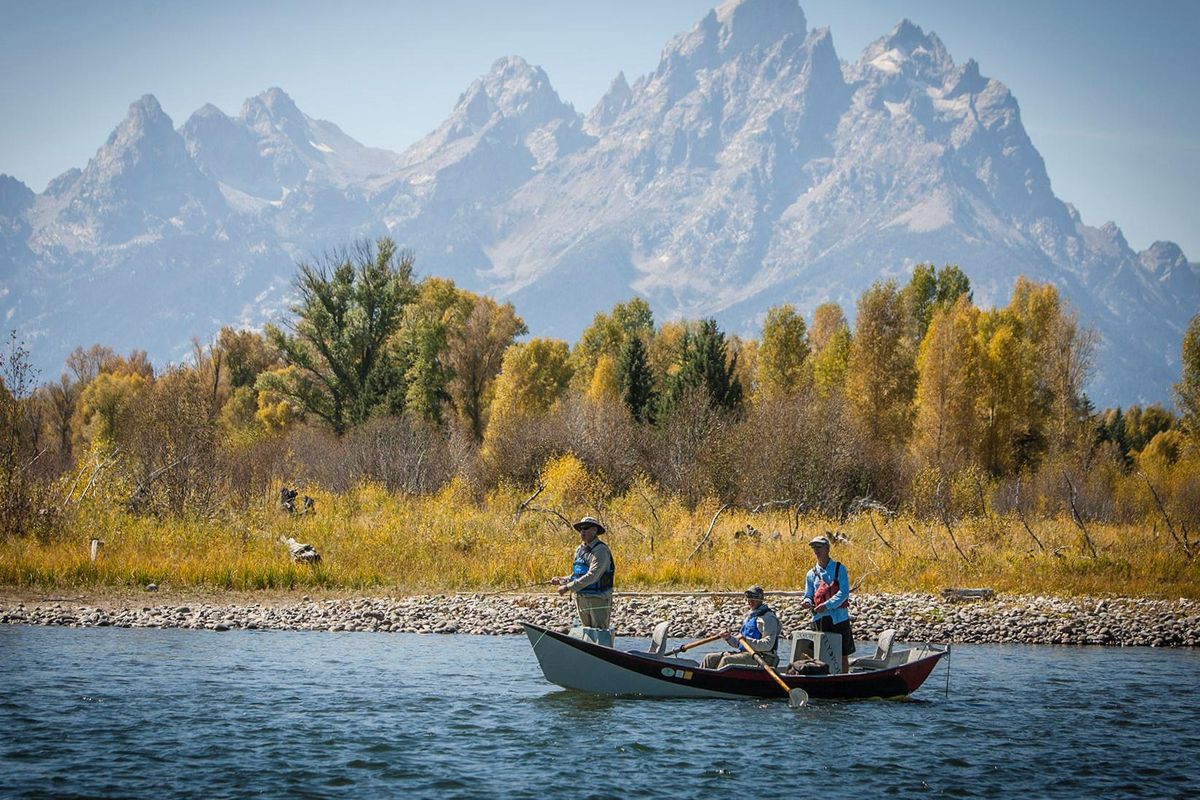Rich Landers: One Fly fishing tournament is ultimate test of angler choices

A fly fisher’s stream-side selection of patterns to fix on the line has more perplexing variables than the art of creating a fly at the vise.
Nothing crystallizes this crux moment like a contest that requires an angler to choose a single fly for an entire day of fishing.
The Jackson Hole One Fly Tournament, held each September since 1986 on the Snake and South Fork Snake rivers, is venerable for raising money to fund education, conservation, preservation and rehabilitation projects for the benefit of trout fisheries.
Underneath that mission is a hot competition for braggin’ rights among fly tiers as well as guides, whether they’re fishing as competitors or rowing boats for contestants.
“People will tie and test fly patterns for weeks before the tournament and plot their favorite parts of the river to hit,” said Quincy Liby, manager of the South Fork Lodge fly shop in Swan Valley, Idaho.
“They can be pretty secretive about it,” she added, noting that guides would make good CIA agents.
This year’s top angler among 170 contestants was Trey Scharp, a Grand Teton Fly Fishing guide, who racked up the most points for numbers and size of fish with a fly he called the Scharp’s Skunk Works Minnow.
The pattern, as shown in one sketchy photo that leaves a lot to the imagination, appears to be something that could be fished dry or under water. As in the past three seasons, there’s no write-up or detail photo of the winning pattern on the One Fly website.
“I don’t even know exactly what that fly looks like – and I tried to find out,” said Bruce James who manages the Grand Teton shop. “Fishing guides can be tight-lipped even around their mothers.”
James has been involved with the One Fly tourney for its entire 30-year run and doesn’t recall that one unaltered pattern ever won the event twice.
“Things change,” he said.
He wasn’t suggesting that mayflies have evolved, but rather that the materials and techniques fly tiers use to imitate natural trout food progress – and so do angler attitudes.
The Turck Tarantula, a rubber-legged dry or wet pattern resembling a Madam X, became a rage after topping the One Fly event in 1990.
“The Turck was hot and then it died,” James said. “Nobody uses it anymore around here. Everyone’s into foam nowadays. They float better and longer.
“God only knows what the next rage will be. I only know that there will be one.”
Ed Emory, a South Fork Lodge guide who’s won the One Fly four times, and was voted the event’s top Idaho guide this year, looks beyond the fur, foam and feathers in helping his anglers select a fly.
“Normally I’m a big dry fly and dropper guy,” he said, noting that he often applies the same high-low logic to the One Fly.
“A convertible fly makes sense – one that you can fish dry in the morning and then use as a nymph in the afternoon when the sun’s higher and the fish tend to be down.”
A streamer would be a good day-long, fish-catching choice, but it’s also more susceptible to snagging on underwater debris. “Lose your one fly and you’re done for the day,” he said.
This year’s biggest fish prize went to a trout caught on a red-bellied, white-legged derivative of the Chernobyl Ant. The pattern is based on a head and abdomen of high-density foam with rubber legs that create lifelike action on or in the water.
The Chernobyl Ant was created on the Green River. A tweaked version was the top producer in the 1995 One Fly and has been mutating ever since into angler favorites such as the Chubby Chernobyl.
“All good flies,” Emory said.
In 2010, the top fly was the Brown Rubber Leg Stonefly Nymph created by Emory. It looks a bit like an animal dropping infested with white worms.
Emory’s 26 years of experience was the key to forfeiting the security of a dry fly and taking a risk in fishing a nymph with a split shot under an indicator. The angler fishing the stonefly as Emory rowed could benefit from the veteran guide’s knowledge of every nymph-grabbing snag.
“I don’t consider the One Fly to be a showcase for the next best fly pattern,” Emory said. “It’s more about being the right place and right time for the angler.
“A lot of guides try to make a name by tying THE fly. There are all kinds of crazy theories. It becomes a head game for days and days.”
But sometimes the ultimate decision at the stream is flat-out easy.
“It comes down to confidence,” he said. “You won’t catch as many fish if you have doubts in the fly you’re using.”
Fly fishing guide Trey Scharp expounds, somewhat, on his tournament-winning fly pattern in Rich Landers’ Outdoors Blog.